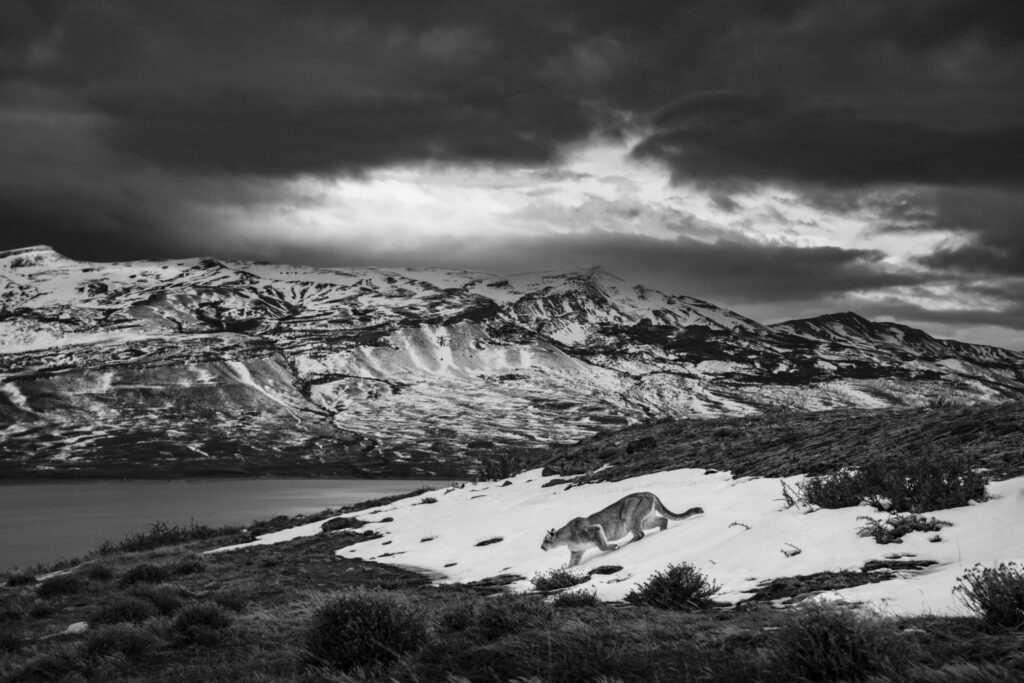“As we learn to listen to the land, we discover that we are not separate from it; we are part of it.” – Robin Wall Kimmerer

British Columbia, 2018
Thirty years ago, I chartered a pilot to drop me off alone in the aptly named Barren Grounds, just 300 miles north of the Arctic Circle. For three months, I hiked over 600 miles on foot and canoed over 2,000 miles through the Canadian wilderness. Mostly, I wanted to test my limits and prove to myself that I could survive on my own. My outward objective, however, was to photograph tundra wolves. After weeks of fruitless searching, I spotted what seemed to be a flat, greyish rock nestled among the lupines. Heart racing, I dropped to the ground and crawled on my belly for the better part of an hour, inching closer until I was just 20 yards away. Through the tangled willows, I finally glimpsed a pair of tawny eyes, perked ears, and the silver face of a lone wolf.

British Columbia, 2011
Since that initial solo venture, I have encountered many more wolves and even had the honor of lounging feet away from a perfectly relaxed pack. Each interaction has been an intensive course in patience as I slowly earned their trust. Wolves are shy by nature, highly cautious, and rarely approach humans. Attacks on people are so scarce that only a handful have ever been recorded across North America within the last century. Nevertheless, the archetype of the “big bad wolf” persists in fiction, film, and timeless lore. Humans, after all, love to be scared.
While most of us know that wolves do not impersonate grannies to trick children or huff and puff houses to the ground, we still carry an inherent fear fueled in part by childhood stories and legends. Fairy tales like Little Red Riding Hood seem harmless enough, but as biodiversity continues to plummet across the continent, the fictitious villain suddenly becomes a very real and convenient scapegoat.

British Columbia, 2011

British Columbia, 2020
When animals like deer and other prey begin to decline in number, wolves are generally the first on the list of suspects. Somewhere between sharpening our pitchforks and pointing fingers, however, we seem to have forgotten that wolves have existed in North America for about 30,000 to 50,000 years—long before the first known arrival of humans.
Overall, the devastation wrought by roads, deforestation, mining, and drilling has inflicted far greater harm on wildlife than wolves ever have. Yet somehow, we still believe the solution to restoring nature lies in trying to control and kill it. Government-sanctioned wolf culls are still regularly implemented as a method of wildlife “management,” while corporate entities continue to push for oil dredging and copper mining. The Canadian government is leading a taxpayer-funded extermination of 4,000 wolves in British Columbia alone. Until we learn to hold our own species accountable for the true damage done to our landscapes, the same mistakes will be made again and again.

British Columbia, 2011
My hope in sharing the beauty of animals like wolves is to inspire a deeper understanding and appreciation of their story. Villainizing the predators that have maintained balance within their ecosystems for millennia will only plunge us deeper into a cycle of destruction. Every animal, no matter how feared or misunderstood, contributes to the beauty of our world. Shifting our focus to addressing the broader systemic threats that truly endanger our planet is the first step to facing the truth and healing our broken relationship with nature.




























